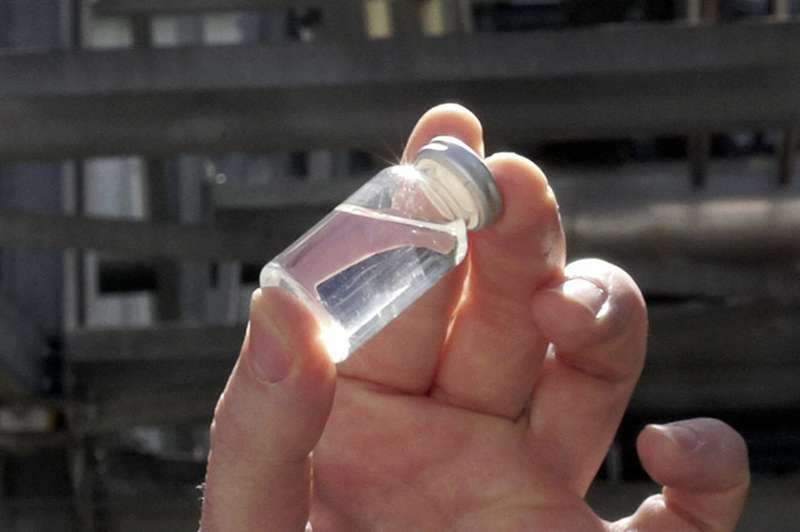
The energy of the future according to Audi - what will we pour into the tank?
No matter how crazy the fuel lobby is, the situation is clear - there are more and more people on the globe and everyone wants to have a car, and at the current pace of civilization development, fossil fuels are becoming less and less, but at a fast pace. Therefore, it is natural that the first look into the future is a look at the sources of energy. Are we dependent on oil and gas? Or maybe there are other ways to drive a car? Let's see what Audi's point of view is.
“No more looking down the tailpipe,” says Audi, adding, “No more counting CO2.” It sounds rather strange, but the host quickly explains. “It would be a mistake to focus on CO2 coming out of the tailpipe – we need to treat it globally.” It still sounds strange, but soon everything becomes clear. It turns out that we can afford to emit CO2 from the exhaust pipe of a car, provided that we used the same CO2 from the atmosphere to produce fuel for it. Then the global balance… I was afraid that I would hear “there will be zero” at that moment, because for me, as an engineer, it is clear that it will be more positive. Luckily, I heard: "...it will be much more useful." It already makes sense, and here's how the Bavarian engineers handle it.
Nature itself, of course, was a source of inspiration: the cycle of water, oxygen and CO2 in nature proves that a mechanism powered by the sun can be activated. Therefore, it was decided to imitate natural processes in laboratories and work on launching an endless cycle with the balance of all ingredients tending to zero. Two assumptions were made: 1. Nothing is lost in nature. 2. Waste from any stage must be used in the next stage.
However, it was first investigated at which stage of the car's life the most CO2 is emitted (assuming it is a compact car with 200.000 miles on 20 km). It turned out that 79% of harmful gases are formed in the production of cars, 1% in the use of cars, and 2% in recycling. With such data, it was clear that it was necessary to start from the stage of using the car, i.e. fuel combustion. We know the advantages and disadvantages of classic fuels. Biofuels have their advantages, but not without their disadvantages - they take away agricultural land and, as a result, food, they will never be enough to meet all the needs of civilization. Thus, Audi introduces a new stage, which it calls E-Fuels. What is it about? The idea is clear: you must produce fuel using CO2 as one of the ingredients in the production process. Then it will be possible with a clear conscience to burn fuel, releasing CO2 into the atmosphere. Again and again. But how to do that? Audi has two solutions for this.
First Solution: E-Gas
The idea behind the E-Gas idea starts with an existing solution. Namely, with the help of windmills, we catch wind energy. We use the electricity generated in this way in an electrolysis process to produce H2. It's already fuel, but the lack of infrastructure means the engineers have to keep working. In a process called Methanation, they combine H2 with CO2 to produce CH4, a gas that has the same properties as natural gas. Thus, we have a fuel for the production of which CO2 was used, which will again be released during the combustion of this fuel. The energy needed for the processes described above comes from natural renewable sources, so the circle is complete. Sounds too good to be true again? A bit so, and maybe I didn't find something in the fine print in the presentation, but even if this process requires "energetic feeding" here and there, it's still a step in a new, interesting direction.
The CO2 balance is undeniably better in the above solution, and Audi proves this with numbers: the cost of a car to travel 1 km (compact 200.000 km) on classic fuel is 168 g CO2. Less than 150 with LNG Less than 100 with biofuels And in the e-gas concept: less than 50 g CO2 per kilometer! Still far from zero, but already 1 times closer compared to the classical solution.
In order not to give the impression that Audi would become a fuel magnate, not a car manufacturer, we were shown (previously taking mobile phones and cameras with us) the new Audi A3 with a TCNG engine, which we will see on the roads in a year. time. Unfortunately, it didn't get launched, so we don't know much more than what it is, but we're happy to think that theory and presentations are followed by a very concrete product.
Solution two: E-diesel / E-ethanol
Another, and in my opinion, even more interesting and bold concept that the Bavarians are investing in is e-diesel and e-ethanol. Here, Audi has found a partner across the ocean, where in the US South JOULE produces fuel through photosynthesis - from the sun, water and microorganisms. Huge green beds roast in the hot sun, devouring CO2 from the atmosphere and producing oxygen and ... fuel. Exactly the same process happens in every factory, only instead of filling our cars, these factories just grow. Scientists from the United States, however, looked into their microscopes and grew a single-celled microorganism that, in the process of photosynthesis, instead of biomass, produces ... that's right - fuel! And on request, depending on the type of bacteria: once ethanol, once diesel fuel - whatever the scientist wishes. And how much: 75 liters of ethanol and 000 liters of diesel per hectare! Again, sounds too good to be true, but it works! Moreover, unlike biofuels, this process can take place in a barren desert.
The most interesting thing is that the concepts described above are not a very distant future, the industrial production of fuels using microgranules should begin as early as 2014, and the fuel price should be comparable to the price of classic fuels. . It would be cheaper, but at this stage it's not about the price, but about the very prospects of producing fuel that absorbs CO2.
It looks like Audi isn't going to look down the tailpipe endlessly - instead, it's working on something completely new that could balance CO2 emissions on a global scale. Seen from this perspective, fears of oil depletion are no longer so bleak. Probably, environmentalists will not be satisfied with the fact that plants are used for fuel production or the prospect of using the desert as a field for cultivation. Certainly, images flashed through the minds of some, showing the logos of manufacturers in the Sahara or the Gobi, visible from space. Until recently, obtaining fuel from plants was a complete abstraction, suitable for an episode of a science fiction film, but today it is a very real and achievable future. What to expect? Well, we'll find out in a few, maybe a dozen or so years.
See also: Engine evolution (r) - where is Audi heading?
